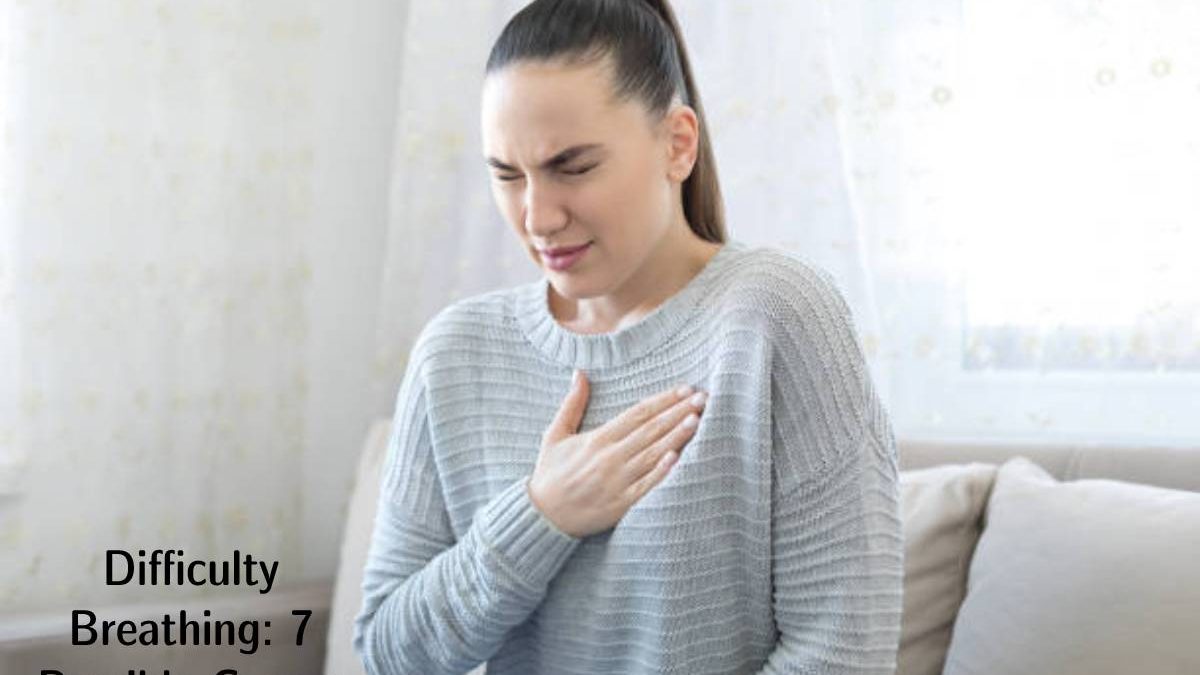Difficulty Breathing: 7 Possible Causes – Shortness of breath, also called dyspnea, reflects unpleasant respiratory discomfort. Its onset can be recent and rapid (acute dyspnea) or progressive and old (chronic dyspnea). The doctors on Live explain to you the different possible causes of dyspnea.
Table of Contents
What is Dyspnea?
So many factors can cause dyspnea. It was open by Difficulty in inhaling and exhaling. The discomfort it causes can vary from one person to another, and its intensity is not always an indicator of its seriousness.
What are The Different Types of Dyspnea?
There are different types of shortness of breath. It is essential to know how to distinguish them to be able to identify better but what causes them and to obtain the appropriate treatment:
Acute Dyspnea
Acute dyspnea is a frequent reason for consultation in the emergency room. The most frequent origins in adults are acute heart failure, pulmonary embolism and a pulmonary infection occurring on an already diseased lung (asthma, chronic obstructive pulmonary disease (COPD), etc.)
Cardiac Dyspnea
Moreover, Cardiac dyspnea results from heart failure: the heart no longer fulfils its role of pumping blood flow. Enema appears all over the body, and the lungs become flooded. The patient then feels suffocation and pressure in the chest.
Pulmonary Embolism Dyspnea
It is dyspnea occurring suddenly but of variable intensity. It is usually associated with pain in the chest.
Inspiratory Dyspnea
Inspiratory dyspnea showed Difficulty in inhaling air. It is often an obstacle in the trachea larynx or a reduction in the larynx diameter in case of laryngitis. It can be associated with a modification of the voice.
Expiratory Dyspnea
It is found in an asthma attack or an attack of chronic obstructive pulmonary disease (COPD) and is then associated with wheezing.
Kushal’s Dyspnea
Kushal’s dyspnea is dyspnea that breaks down into four stages: inspiration, pause, expiration, and pause. It’s so breaks typically found in a complication of diabetes, metabolic ketoacidosis, which corresponds to an accumulation of acidic substances in the blood.
Chronic Dyspnea
But it is a progressive onset of shortness of breath that lasts over time. As with acute dyspnea, the leading causes are cardiac and pulmonary origin. It generally begins by being present for the effort.
Dyspnea on Exertion
Dyspnea on exertion is a difficulty breathing that occurs exclusively during physical exertion. It is often an indicator of lung diseases, such as asthma or heart failure. The heart can then not adapt to the body’s increased demands during exercise. The more the pathology progresses, the more Difficulty breathing increases until the patient feels shortness of breath even at rest.
What are the Symptoms Associated with Breathing Difficulties?
Patients usually describe symptoms associated with shortness of breath as a feeling of suffocation, an inability to breathe in quickly or deeply. They also have the unpleasant sensation of having to inhale before they have even finished exhaling. Cough, wheezing, and chest pain may also occur depending on the cause of the dyspnea.
Why can we have Difficulty Breathing?
Shortness of breath is usually associated with heart or lung pathologies. However, it tins practical in several other cases:
- Respiratory Disorders
Asthma, chronic obstructive pulmonary disease (COPD).Obstruction by a foreign body, pulmonary emphysema, Respiratory tract infection. (Laryngitis, bronchitis, pneumopathy, etc.), bronchial cancer. Pulmonary embolism and smoldering.
- Heart Problems
All origins of heart flop, mood valve anomalies and angina pectoris. ZJ
- Neurological Disorders
All neuromuscular pathologies might worsen the respiratory muscles.
- Deficiency
Dyspnea can be caused or increased by anemia (iron deficiency).
- Obesity
How do you Diagnose the Cause of Breathing Difficulties?
However, Causes of dyspnea canister identified through several types of examinations:
- Clinical examination;
- A blood test;
- A stress test;
- An electrocardiogram;
- Measurement of arterial gas (pH analysis as well as oxygen and carbon dioxide levels in the blood);
- A chest X-ray;
- Respiratory function exploration;
- Heart ultrasound.
Dyspnea scales exist to measure the extent of dyspnea and its impact on the patient’s daily activity.
What to do if you have Difficulty Breathing?
So you find that you are having Difficulty breathing, it is advisable to seek medical advice to identify and treat the cause of the dyspnea. Regular physical activity may be optional to improve breathing and combat an overly sedentary lifestyle.
On Live, general practitioners are at your disposal and can prescribe the appropriate treatment.

